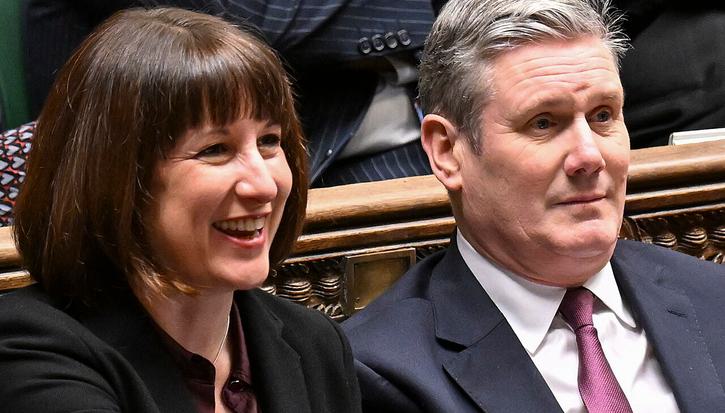Finance in the Anthropocene by Dr Nick Taylor
Finance in the AnthropoceneArticle
What do risk and uncertainty mean to you? Risk is our society’s dominant way of governing and representing the future with the pretension to tame uncertainty. In the age of the Anthropocene, we must pay attention to, openly debate and challenge the claims over how alternative futures are calculated as risks. For climate scientists, disagreement over the uncertainty of a coming ‘ice apocalypse’ implies a difference between adapting coastal communities at risk of flooding, at an undoubtedly high cost, and a scenario in which cities along coastlines will be rapidly lost to sea level rise despite our best efforts. If we are to strive for a future respectful of ecological limits then we will need to think about the tools which currently calculate and manage risk, and how they need to change.
Among professions in the financial services industry, understandings of risk and uncertainty, and how they are shaped, have profound repercussions. This is the case not only for financial crises, as we have witnessed over the last decade, but also for our responses to global environmental crises. Professionals in finance influence where capital does and does not flow to, structuring our capacity to slow the increasing warming of the planet, and the adaptation to and distribution of environmental risks to be borne in the coming decades. Investment is deeply imbricated in our global ecology and reflects the expectations of the powerful for the future of the global economy; as Jason Moore argues, “Wall Street is a way of organizing nature”.
It is estimated that by 2030, $90 trillion of investment will be needed globally in infrastructure for a low carbon future. Huge disinvestment must also be made from fossil fuel companies if carbon budgets are to be met. Accordingly, regulators and influential actors in finance have been highlighting how climate change and our responses to it will impact financial stability: from the fragility of the insurance sector in the face of increasingly devastating natural disasters to the impact that devaluation of assets in the carbon economy by technological or legislative change will have on institutional investors such as pension funds (and importantly, their members, who rely on them for a retirement income). Only by framing threats to the environment as material, financial risks will they be accepted as important, the logic goes.[i]
Within the Centre for the Understanding of Sustainable Prosperity (CUSP), we are engaged in work that explores the many implications of transition to a low carbon future, from issues of financial instability to the moral understandings of various actors implicated. In my own research for CUSP, I have been exploring how conceptions of risk and value among actuaries might relate to how they see their profession’s responsibilities towards challenges of the long-term future such as climate change. Actuaries work across the insurance and pensions sectors and beyond, managing wealth and risk into the future. They can wield significant influence over investment allocation in their role as advisers and consultants to institutional investors.
What problems does an environmentally conscious actuary face in the investment industry? How might they take on the challenge of directing investment to low carbon infrastructure? Here are three prominent obstacles. First off, the vast majority of investment from pension funds goes into secondary markets: only around 4% is directly invested in the economy, and just 1% of that in infrastructure.[ii] For insurance companies, who represent some of the largest asset owners globally, infrastructure investment forms 2% of their assets under management. Simply getting more investment, let alone ‘green’ or ‘sustainable’ investment, is a challenge. When the vast majority of capital is allocated at a distance to the real economy, and simply chasing a set level of risk-adjusted return over the short run, an “artifice of indifference” is erected between investors and their investments.[iii]
Next up, and linked to the first point, are assumptions about risk. The dominant approach to modelling investment portfolios ignores systemic risks, including the risk of ‘stranded assets’ exposed to potential devaluation. Models adopted from financial economics currently assume that all the important information is ‘priced in’ already, representing the best picture of risks and returns for an investment strategy. Financial analysts typically use risk and valuation models that have a 3-5-year horizon and investment consultants (who may or may not be actuaries by training) are incentivized to operate on a similarly short-term basis.[iv] In this regard, climate change is understood to sit in a zone of deep uncertainty, where risks are considered impossible to measure or manage.[v]
Finally, and less often discussed openly in responsible investing forums, is the issue of power and concentration in the financial sector. The existing approach to managing climate risk in the UK is via voluntary risk disclosure. A new Taskforce on Climate-Related Financial Disclosure (TCFD) dedicated to this end and backed by central banks around the world is indeed spurring conversations around climate change. Yet large investment managers continue to block disclosure, major pensions funds and banks continue to invest in fossil fuels and insurers continue to both invest in and underwrite them. When these actors have the power to ignore risks or slow pressure to transform – whether that be in the form of disclosure or efforts to include environmental considerations in fiduciary duty – then they will continue on a business-as-usual path.[vi] There is little evidence to suggest that without firmer legislation such actions will be halted in adequate time to meet carbon budget limits.
How do we move to a financial system that is actually aligned with the future health of the planet? This is a formidable challenge for which there are no straightforward solutions. There are initiatives working to this end, however. Here are three areas of ongoing action to consider.
There is a need to challenge the models, and general understandings, of risk and value in existing use. Far from a conservative future outlook, the actuarial perspective might push us to concentrate on the ‘tail risks’ containing the worst-case scenarios of climate catastrophe and biodiversity loss.[vii] Accordingly, the risks would be worth averting at far greater cost than is currently accepted. There are a range of initiatives seeking to test and review investment portfolios against scenarios like the 2°C climate objectives (inadequate as this target may be).[viii] It is unlikely that such efforts will successfully internalise environmental externalities and drive capital to be priced at a desired ‘true cost’ for such scenarios. But consistently challenging and testing investments against forward-looking visions that uphold the values of a just and sustainable transition to a low carbon economy is vital.
Simply putting information out is not enough when powerful market actors will not follow suit. Tougher laws and legislation would ensure more action to avert catastrophic climate change and encourage low carbon investment. At the same time as the Paris Agreement was being adopted in 2015, the French government introduced Article 173 on energy transition and green growth. It mandates disclosure of climate-related financial risks for investors and listed companies and should be considered for the UK context, rather than dismissed as Gallic regulatory enthusiasm. Besides, the law still gives significant flexibility to financial actors, and ultimately only mandates risk reporting, not action.
Of course, there is plenty of potential for the state to take the initiative on financing green investment itself, whether through innovative green fiscal or monetary policy. But halting ongoing investment in fossil-fuel energy and other ecologically destructive areas and the need for private capital switching to low carbon infrastructure will remain. Mandatory disclosure might provide a necessary but not sufficient basis for pushing further action in this regard. Other strategies that would have a material effect on costs, and perceptions of risk, are available. For example, public subsidies for fossil fuels – in some cases, the only thing insuring the industry’s profitability – can be phased out.
Lastly, broader democratic challenges for private finance to meet a vision of an equitable and sustainable future will be essential. Campaigns that challenge the profits made through activities that redistribute risks to the most environmentally vulnerable areas are essential. There is a need to consider how these might step up a gear. Insurers are already alert to the potential of liability risks, where they may be held financially responsible for underwriting ecologically destructive companies. If such activities are uninsured, of course, they remain largely unviable, a fact not lost on campaigners. Many will also have their eye on cases like the Peruvian farmer, Saul Luciano Lliuya, who is suing German energy company RWE in a German court, for climate damages to his hometown of Huaraz. Climate justice is being fought on many fronts.
Currently the dominant risk management approach focusses on the prospect of financial devaluation and instability induced by climate change. As important as this is, the kinds of calculation that are ultimately most pressing relate to how we might consider the financial system as an ecological regime itself. A politics of calculation that contests this regime – its conceptions and management of risk – can draw on the voices of those already at the sharp end of risk and on the anticipatory work of climate science to become much more assertive in its demands.
Dr Nick Taylor is a Research Fellow for the Centre for the Understanding of Sustainable Prosperity working in the Political Economy Research Centre (PERC) Goldsmiths, University of London. He tweets @nicklaus_taylor.
[i] On the expanding risk imagination of the Bank of England, including climate-related risk, see Morris, J. (2018) Securing Finance and Mobilizing Risk Before and After the Global Financial Crisis, London: Routledge.
[ii] See Silver, N. (2017) Finance, Society and Sustainability, London: Palgrave Macmillan, p.113.
[iii] This phrase is borrowed from Duncan Wigan’s research on derivatives, highlighting the unbridgeable gulf opened up between property ownership and stewardship in a financialised economy. See Wigan, D. (2009) ‘Financialisation and Derivatives: Constructing an Artifice of Indifference’, Competition & Change, 13(2): 157-172.
[iv] See the report by the 2° Investing Initiative and The Generation Foundation (2017), All Swans are Black in the Dark; Caldecott, B. & Rook, D. (2015) Investment consultants and green investment: Risking stranded advice? Oxford: Smith School of Enterprise and the Environment.
[v] Powerful actors in the fossil economy have also been adept at pushing climate-related risk and certainty into the realm of the uncertain, in order to delay political action against fossil fuel interests: McKibben, B. (2017) ‘Winnning Slowly is the Same as Losing’, Rolling Stone, 1st December.
[vi] See Christophers, B. (2017) ‘Climate Change and Financial Instability: Risk Disclosure and the Problematics of Neoliberal Governance’, Annals of the American Association of Geographers, 107(5): 1108-1127.
[vii] Bettis, O., Dietz, S. & Silver, N. (2016) ‘The risk of climate ruin’, CCEP & Grantham Research Institute Working Paper.
[viii] Examples include the 2° Investing Initiative and Carbone 4.
Related items

Regional economies: The role of industrial strategy as a pathway to greener growth
Regions like the North should have a key role to play in the development of a green industrial strategy.
Achieving the 2030 child poverty target: The distance left to travel
On 27 March, the Scottish government will announce whether Scotland’s 2023 child poverty target – no more than 18 per cent of children in poverty – was achieved.
Spring statement: A changed world calls for a changed course
If there are decades where nothing happens and there are weeks where decades happen, the last few weeks feel seismic. The prime minister was right to say the world has changed. Donald Trump’s re-election in November has unleashed a wave…